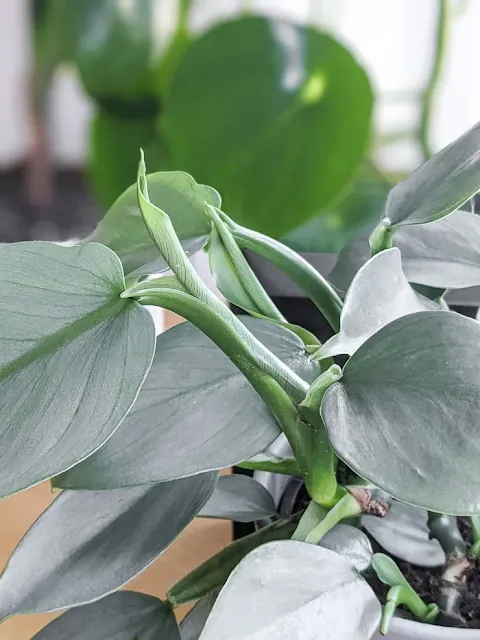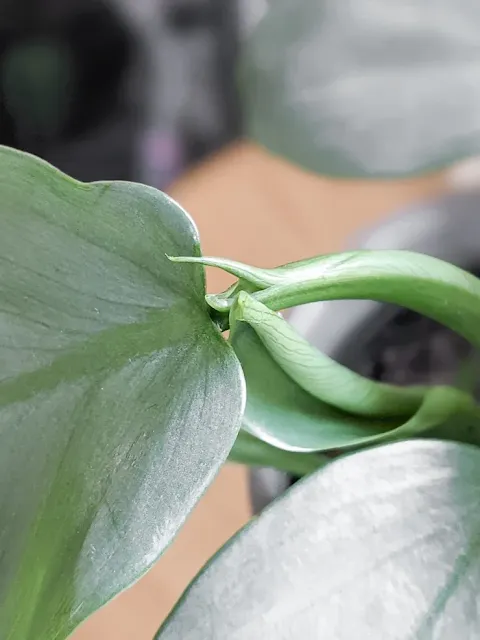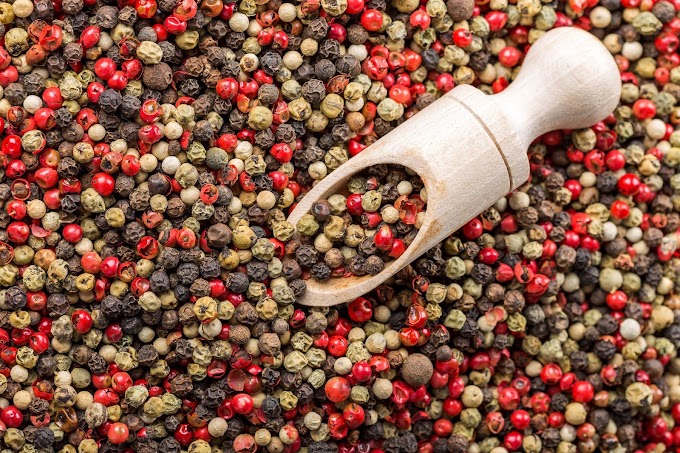 |
| Silver Sword Philodendron |
If you're looking for an eye-catching plant that is easy to care for, the Silver Sword Philodendron is a great option. With its unique silver-green foliage and ease of care, it has become a popular choice for plant enthusiasts.
However, like any other plant, the Silver Sword Philodendron requires proper care and attention to thrive. In this article, we will discuss everything you need to know about Silver Sword Philodendron care to keep your plant healthy and happy.
Understanding the Silver Sword Philodendron
Before we dive into the care tips, let's take a closer look at this beautiful plant. The Silver Sword Philodendron, also known as Philodendron Hastatum, is a member of the Araceae family, which includes other popular indoor plants like the Monstera Deliciosa and Peace Lily. It's native to the rainforests of South America, where it grows as a climbing vine. In its natural habitat, it can reach heights of up to 20 feet!
The Silver Sword Philodendron gets its name from the silvery-green color of its leaves. These leaves are arrowhead-shaped and can grow up to 3 feet long, making them a striking focal point in any room. As the plant matures, it may produce long, slender stems with aerial roots, which it uses to climb trees in its native habitat.
Tips for Silver Sword Philodendron Care
 |
| Silver Sword Philodendron |
Now that we have a better understanding of the Silver Sword Philodendron, let's get into the care tips. With the right conditions and care, your plant can thrive and bring beauty to your home for years to come.
Watering
One of the most important aspects of caring for your Silver Sword Philodendron is watering. Over-watering or under-watering can both be detrimental to your plant's health. It is important to find a balance and not let the soil dry out completely, as this can lead to root rot.
A good rule of thumb is to water your plant when the top inch of soil feels dry. This can vary depending on the humidity levels in your home, so it's important to monitor the soil regularly.
Light
The Silver Sword Philodendron thrives in bright, indirect light. Too much direct sunlight can scorch its leaves, while too little light can stunt its growth. It is best to place your plant near a window that gets plenty of indirect sunlight.
If you're struggling to find a spot with enough natural light, you can supplement it with artificial light. LED grow lights are a great option for indoor plants and can be easily set up to provide the right amount of light for your Silver Sword Philodendron.
Humidity
The Silver Sword Philodendron is a tropical plant that thrives in high humidity. In low-humidity environments, the plant can become stressed and more susceptible to pests and diseases.
To increase humidity levels, you can use a humidifier or place a tray of water near your plant. You can also mist the leaves regularly to provide some extra moisture.
Soil
The Silver Sword Philodendron prefers well-draining soil that is rich in organic matter. A mixture of peat moss, perlite, and vermiculite can provide the perfect balance for your plant's needs.
It is important to ensure that the soil is not too compacted, as this can lead to poor drainage and cause root rot.
Fertilizer
 |
| Silver Sword Philodendron |
Fertilizing your Silver Sword Philodendron is important for its growth and overall health. You can use a balanced, water-soluble fertilizer once a month during the growing season (spring and summer). In the winter, you can cut back to once every two to three months.
Propagation
The Silver Sword Philodendron is an easy plant to propagate. You can propagate it through stem cuttings or division. Stem cuttings can be taken from the plant's stem and placed in water or soil to the root. Division involves separating the plant's root ball into smaller sections and potting them individually.
Pests and Diseases
The Silver Sword Philodendron is generally a hardy plant that is not susceptible to many pests or diseases. However, it can attract spider mites, mealybugs, and scale insects. Regularly inspecting your plant for signs of infestation and treating it promptly can help prevent the spread of pests.
In terms of diseases, root rot can be a common issue if the plant is overwatered or the soil is not well-draining. Yellowing leaves can also be a sign of nutrient deficiencies or improper watering.
Common Problems of Philodendron Silver Sword
 |
| Silver Sword Philodendron |
While Philodendron Silver Sword is generally a relatively easy plant to care for, there are a few common problems that can occur. Here are some of the most common issues that Silver Sword owners may encounter:
Root Rot: Overwatering or poorly draining soil can cause root rot in Philodendron Silver Sword. This can be identified by yellowing leaves, a foul odor coming from the soil, or soft and mushy roots. To prevent root rot, make sure the soil is well-draining and only water when the top inch of soil is dry.
Pest Infestations: Common pests that can affect Philodendron Silver Sword include spider mites, mealybugs, and scale. These can cause yellowing leaves, webbing or white residue on the plant, or stunted growth. You can prevent pest infestations by keeping the plant clean, inspecting it regularly, and treating it with a pesticide if necessary.
Brown Tips: Brown tips on the leaves of the Philodendron Silver Sword can be caused by underwatering, low humidity, or excess fertilizer. To prevent brown tips, make sure the plant is watered consistently and that the air around the plant is humid. Avoid fertilizing too often or using too much fertilizer.
Leaf Yellowing: Yellowing leaves on Philodendron Silver Sword can be caused by a lack of nutrients, too much direct sunlight, or pest infestations. To prevent yellowing leaves, make sure the plant is in a well-lit area with indirect sunlight, fertilize regularly with a balanced fertilizer, and inspect the plant for pests.
Curling Leaves: Curling leaves on Philodendron Silver Sword can be caused by low humidity or exposure to cold drafts. To prevent curling leaves, make sure the plant is in a warm, humid environment and that it is not placed in a location where it is exposed to cold drafts.
By keeping an eye out for these common problems and taking preventative measures, you can help your Philodendron Silver Sword thrive and grow healthy.
Philodendron Silver Queen vs Silver Sword
 |
| Silver Sword Philodendron |
Philodendron Silver Queen and Silver Sword are two popular varieties of Philodendron plants that are often confused with each other due to their similar-sounding names and appearance. However, there are some key differences between the two that can help you distinguish them.
One of the most notable differences between the two plants is their leaf shape. Philodendron Silver Queen has large, heart-shaped leaves with prominent veins and a glossy, dark green color. On the other hand, Philodendron Silver Sword has elongated, sword-shaped leaves with a silvery-green color and a more matte finish.
Another difference is their size and growth habit. Philodendron Silver Queen is a larger plant that can grow up to 6 feet tall, while Philodendron Silver Sword is a more compact plant that typically grows up to 2-3 feet tall. Additionally, Silver Queen has a bushier growth habit with leaves that grow more horizontally, while Silver Sword has a more upright growth habit with leaves that grow vertically.
In terms of care, both plants have similar requirements. They prefer bright, indirect light and well-draining soil that is kept consistently moist but not waterlogged. Both plants can also benefit from occasional misting to increase humidity levels.
Overall, while these two Philodendron varieties may look similar at first glance, there are several key differences between them that make them unique. It is important to consider these differences when selecting a plant to ensure that you are providing it with the appropriate care and environment for it to thrive.
FAQs
 |
| Silver Sword Philodendron |
Is Silver Sword philodendron rare?
The Silver Sword Philodendron (Philodendron Hastatum) is not considered a rare plant. It is a popular houseplant and is widely available in nurseries and online plant stores. However, it is not as commonly found in big-box stores as some other Philodendron varieties, which may give the impression that it is rare.
The Silver Sword Philodendron is native to Central and South America, where it grows in rainforests and other tropical habitats. It is a member of the Araceae family, which includes other popular houseplants such as Monstera and Pothos.
While the Silver Sword Philodendron may not be rare, it is still a unique and beautiful plant that can add a touch of tropical elegance to any indoor space. Its elongated, silvery-green leaves and upright growth habit make it a striking addition to any collection of houseplants. Additionally, its ease of care and adaptability to a range of lighting conditions make it a great choice for both novice and experienced plant owners.
Whether you are looking to add a Silver Sword Philodendron to your collection or simply admire its beauty, this plant is sure to impress with its unique features and ease of care.
Is Philodendron Silver sword hard to care for?
Philodendron Silver Sword (Philodendron Hastatum) is not considered a difficult plant to care for, making it a great option for both novice and experienced plant owners. However, like any houseplant, it does have specific care requirements that need to be met in order for it to thrive.
One of the most important factors to consider when caring for Philodendron Silver Sword is lighting. This plant prefers bright, indirect light, and will suffer if placed in direct sunlight. If the plant is not receiving enough light, it may grow more slowly or develop smaller leaves. Conversely, if it is receiving too much light, its leaves may become scorched or develop brown spots.
 |
| Silver Sword Philodendron |
Another important factor to consider is watering. Philodendron Silver Sword prefers soil that is consistently moist, but not waterlogged. Overwatering can lead to root rot, while underwatering can cause the leaves to wilt and dry out. It is important to water the plant when the top inch of soil feels dry to the touch, and to make sure that excess water is able to drain from the pot.
In terms of humidity, Philodendron Silver Sword prefers higher levels of humidity. This can be achieved by misting the plant regularly, placing a tray of water near the plant, or by using a humidifier. However, the plant is still able to tolerate lower humidity levels if necessary.
Overall, while Philodendron Silver Sword does have specific care requirements, it is not considered a difficult plant to care for. With the right amount of light, water, and humidity, this plant can thrive and add a touch of tropical elegance to any indoor space.
Do silver swords grow fast?
 |
| Silver Sword Philodendron |
Philodendron Silver Sword (Philodendron Hastatum) is considered a moderately fast-growing plant. With the right care, this plant can grow several inches per year and can reach a mature size of up to 3-5 feet in height and width.
The growth rate of the Philodendron Silver Sword can be influenced by a variety of factors, including lighting, temperature, humidity, and fertilization. In general, providing the plant with bright, indirect light and keeping it in a warm and humid environment can encourage faster growth.
However, it is important to note that even with optimal growing conditions, Philodendron Silver Sword is not considered an extremely fast-growing plant. It typically takes several years for the plant to reach its full size, and it may slow down in growth rate as it ages.
If you are looking to encourage faster growth in your Philodendron Silver Sword, there are a few things you can do. First, make sure the plant is receiving enough light and that the temperature is warm enough for the plant to thrive. Additionally, providing the plant with a balanced fertilizer during the growing season can help encourage healthy growth.
Overall, while Philodendron Silver Sword is not the fastest-growing plant, it is still a beautiful and rewarding addition to any indoor plant collection. With the right care, this plant can thrive and add a touch of tropical elegance to any indoor space.
Is Silver Sword and Silver Queen the same?
No, Philodendron Silver Sword (Philodendron Hastatum) and Philodendron Silver Queen (Philodendron Scandens) are not the same plant, despite both having "silver" in their common name.
Philodendron Silver Sword is a distinct species of Philodendron plant, with distinctive arrow-shaped leaves that have a metallic silver coloration. The leaves of the Philodendron Silver Sword also have prominent veins that add to its unique appearance.
On the other hand, Philodendron Silver Queen is a cultivar of Philodendron Scandens, which is a vining plant that is often grown as a houseplant. The leaves of Philodendron Silver Queen are heart-shaped and have a greenish-gray coloration with silvery markings.
While both plants are prized for their unique silver coloration, they are different species with different growth habits and leaf shapes. It is important to properly identify each plant to ensure they receive the appropriate care and attention.
What light does silver sword need?
 |
| Silver Sword Philodendron |
Philodendron Silver Sword (Philodendron Hastatum) is a tropical plant that requires bright, indirect light to thrive. Direct sunlight can burn the plant's leaves, so it is important to protect the plant from intense sunlight.
Ideally, Philodendron Silver Sword should be placed near a north or east-facing window, where it can receive bright, indirect sunlight for several hours a day. If your home does not have a lot of natural light, you can also use artificial grow lights to supplement the plant's lighting needs.
If the plant is not receiving enough light, it may become leggy and its leaves may lose their silver coloration. On the other hand, if the plant is exposed to too much direct sunlight, its leaves may become scorched and develop brown spots.
In addition to proper lighting, it is also important to maintain consistent temperature and humidity levels for Philodendron Silver Sword to thrive. With the right care, this beautiful plant can add a touch of tropical elegance to any indoor space.
Is philodendron Silver Sword a climber?
Yes, Philodendron Silver Sword (Philodendron Hastatum) is a climber. In its natural habitat, it uses its aerial roots to climb up the trunks of trees in search of sunlight. When grown as a houseplant, it can be trained to climb a moss pole or trellis.
As the plant grows, it will produce new leaves and aerial roots that will seek out a support structure. You can gently guide the plant's growth by tying its stems to a moss pole or trellis with soft plant ties.
Training Philodendron Silver Sword to climb not only looks attractive, but can also help prevent the plant from becoming too leggy and sprawling. It is important to regularly prune the plant to encourage bushier growth and remove any dead or damaged leaves.
If you prefer not to train your Philodendron Silver Sword to climb, it can also be grown as a trailing plant in a hanging basket. Just be sure to provide it with a well-draining potting mix and bright, indirect light to promote healthy growth.
Can silver sword grow in water?
 |
| Silver Sword Philodendron |
Yes, Philodendron Silver Sword (Philodendron Hastatum) can be grown in water. This is a popular method for propagating the plant, as it is easy and effective.
To propagate Philodendron Silver Sword in water, start by taking a stem cutting that is several inches long and has at least one node (the point where a leaf meets the stem). Remove any lower leaves from the cutting, leaving only the top two or three leaves.
Place the cutting in a clean glass jar filled with water, making sure that the bottom of the stem is submerged. Change the water every few days to keep it fresh and prevent the growth of mold or bacteria.
After a few weeks, the cutting should develop roots. Once the roots are several inches long, you can transplant the cutting into a pot with well-draining soil.
While Philodendron Silver Sword can be grown in water, it is important to note that it will still require proper lighting and nutrients to thrive. Be sure to provide the plant with bright, indirect light and a balanced fertilizer to promote healthy growth.
How do you make a silver sword bushy?
To make a Philodendron Silver Sword (Philodendron Hastatum) bushy, regular pruning is important. Pruning not only encourages new growth, but also helps to maintain a more compact shape.
Here are some tips for making your Silver Sword bushy:
 |
| Silver Sword Philodendron |
Pinch back new growth: When the plant produces new stems, pinch back the tips to encourage branching. This will promote the growth of multiple stems, making the plant bushier.
Remove leggy growth: If your Silver Sword is becoming too leggy, prune back the long stems to a healthy node. This will encourage new growth and help to maintain a more compact shape.
Cut back damaged or diseased leaves: If you notice any damaged or diseased leaves on your plant, remove them immediately. This will help prevent the spread of disease and promote healthy growth.
Use a balanced fertilizer: Regular feeding with a balanced fertilizer can help promote healthy growth and keep your Silver Sword looking lush and full.
Provide proper lighting: Philodendron Silver Sword requires bright, indirect light to thrive. If the plant is not getting enough light, it may become leggy and sparse. Make sure to provide your plant with enough light to promote healthy growth.
By following these tips, you can encourage your Philodendron Silver Sword to become bushy and full. Regular pruning and proper care will help keep your plant looking its best.
What soil mix for silver sword philodendron?
 |
| Silver Sword Philodendron |
Philodendron Silver Sword (Philodendron Hastatum) prefers a well-draining soil mix that retains moisture while allowing excess water to drain away. Here's a simple recipe for a soil mix that works well for this plant:
Ingredients:
- Peat moss or coconut coir
- Perlite or pumice
- Vermiculite or sand
- Compost or worm castings
Directions:
Mix equal parts of peat moss or coconut coir, perlite or pumice, and vermiculite or sand in a large container.
Add a small amount of compost or worm castings to the mix and stir well. The compost or worm castings will help to provide nutrients to the plant.
Add enough water to the mix to moisten it, but not make it soaking wet.
Fill the pot with the soil mix, leaving a little space at the top for watering.
It's important to note that Philodendron Silver Sword does not like to be overwatered, so make sure the soil mix is well-draining and not too compact. You can also add some slow-release fertilizer to the soil mix to provide additional nutrients to the plant.
By using a well-draining soil mix and providing proper care, you can help your Philodendron Silver Sword thrive and grow healthy.
From where can I buy Silver Sword Philodendron?
If it's convenient, you can check the availability in your nearby nursery or order them online on Amazon. If not available on Amazon, you can also order online on Comfort Plants.
Conclusion
In conclusion, caring for a Silver Sword Philodendron is not a difficult task. By following the tips and guidelines mentioned in this article, you can easily ensure the healthy growth of your plant.
Remember to keep it in a bright, indirect light and water it when the soil feels dry to the touch. Fertilize it once a month during the growing season and provide it with proper support as it grows taller. Prune it regularly to control its size and remove any dead or damaged leaves.
With a little bit of effort and attention, your Silver Sword Philodendron will thrive and become a beautiful addition to your indoor garden. We hope that this article has provided you with all the information you need to successfully care for your Silver Sword Philodendron and enjoy its beauty for years to come.
Did you add a Silver Sword Philodendron to your home recently? Or, have you already had them before? How has been your experience with their care? Do share your experience with us by commenting below!
We would love to hear from you! Thanks and cheers!









